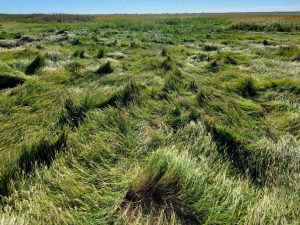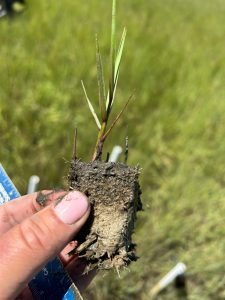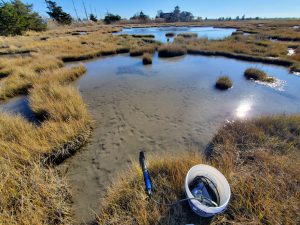
The Merits of the Marsh
 Coastal wetlands, including salt marshes, are incredibly important and biologically diverse ecosystems. They provide valuable food, refuge, and nursery habitat for a wide variety of wildlife, including diamondback terrapins, coastal birds, and a great many of our fisheries species. Salt marshes don’t just support wildlife; they also provide significant protection against storms and flooding, improve water quality by filtering stormwater runoff, and remove carbon from the atmosphere by storing it within their sediments.
Coastal wetlands, including salt marshes, are incredibly important and biologically diverse ecosystems. They provide valuable food, refuge, and nursery habitat for a wide variety of wildlife, including diamondback terrapins, coastal birds, and a great many of our fisheries species. Salt marshes don’t just support wildlife; they also provide significant protection against storms and flooding, improve water quality by filtering stormwater runoff, and remove carbon from the atmosphere by storing it within their sediments.
Coastal Sustainability and Wetland Health
 The Coastal Sustainability and Wetland Health program began with efforts to document the impact of sea level rise on marshes and marsh-dependent species. The health of coastal bird and diamondback terrapin populations is intricately linked to the condition of coastal marsh systems; as a result, monitoring changes in the local population size, behavior, and breeding success of these animals can help us perceive changes within the salt marsh itself. Our work is also increasingly focused on the monitoring of marsh restoration and habitat creation projects. Through beneficial reuse of dredged sediments, we aim to protect the marsh platform from conversion or drowning, and to create elevated coastal bird and terrapin nesting habitat. In order to understand the response of wildlife to these projects, and to document how sea-level rise and coastal flooding are impacting local populations, we are carrying out surveys of marsh-dependent species on The Wetlands Institute property and other restoration sites.
The Coastal Sustainability and Wetland Health program began with efforts to document the impact of sea level rise on marshes and marsh-dependent species. The health of coastal bird and diamondback terrapin populations is intricately linked to the condition of coastal marsh systems; as a result, monitoring changes in the local population size, behavior, and breeding success of these animals can help us perceive changes within the salt marsh itself. Our work is also increasingly focused on the monitoring of marsh restoration and habitat creation projects. Through beneficial reuse of dredged sediments, we aim to protect the marsh platform from conversion or drowning, and to create elevated coastal bird and terrapin nesting habitat. In order to understand the response of wildlife to these projects, and to document how sea-level rise and coastal flooding are impacting local populations, we are carrying out surveys of marsh-dependent species on The Wetlands Institute property and other restoration sites.
 Using a variety of monitoring stations and plots, we keep track of a variety of marsh processes that can influence marsh health as a whole. Fine-scale elevation monitoring stations and sediment plugs cut from the marsh surface can help us quantify the natural accumulation of sediment on the surface of the marsh. Survey plots allow us to keep track of vegetative cover, vegetation height, and marsh soil condition; in turn, high-accuracy elevation surveys, in conjunction with water level monitoring, can help us understand how changing inundation and drainage patterns might be influencing those factors. Water quality sampling in pools and creeks lets us better understand baseline water chemistry regimes, and helps us to identify any changes that might occur after a marsh restoration project. The information we gather by monitoring all of these interrelated factors, alongside our wildlife surveying, can improve our understanding of marsh response to increased flooding under sea level rise and inform future restoration efforts.
Using a variety of monitoring stations and plots, we keep track of a variety of marsh processes that can influence marsh health as a whole. Fine-scale elevation monitoring stations and sediment plugs cut from the marsh surface can help us quantify the natural accumulation of sediment on the surface of the marsh. Survey plots allow us to keep track of vegetative cover, vegetation height, and marsh soil condition; in turn, high-accuracy elevation surveys, in conjunction with water level monitoring, can help us understand how changing inundation and drainage patterns might be influencing those factors. Water quality sampling in pools and creeks lets us better understand baseline water chemistry regimes, and helps us to identify any changes that might occur after a marsh restoration project. The information we gather by monitoring all of these interrelated factors, alongside our wildlife surveying, can improve our understanding of marsh response to increased flooding under sea level rise and inform future restoration efforts.
We continue to build these important data sets with each passing season so that we can provide decision-makers with information about marsh conditions. Our efforts are helping guide management and restoration decisions so the ecological services of coastal salt marshes can be sustained into the future.
Join or Renew
Membership connects you with the wetlands and helps sustain our lifesaving work. Become a member or renew your support today.
